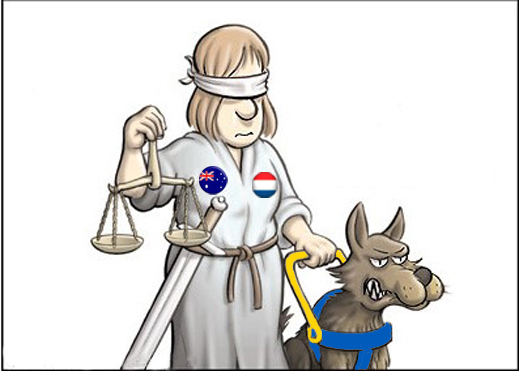
John Helmer,
Moscow
The Australian Government is sure the Dutch Safety Board (DSB) investigation of the downing of Malaysian Airlines MH17 will fail to identify the precise cause of the crash, and will be inconclusive on who and what were responsible. A report, termed final by the DSB, is scheduled for release on October 13.
So certain of the outcome are Australian officials that since May they have been negotiating with the Dutch Government to extend for another year until August 2016 a treaty agreement for Australian police, intelligence agents and Defence Ministry officers to operate in The Netherlands. Without Australian bodies left to identify or repatriate, and only the debris of the MH17 aircraft in partial reconstruction in a hangar at the Hilversum Army Barracks, Dutch and Malaysian sources are questioning what purpose is served by the treaty extension.
In July the Australian and the Netherlands governments signed a protocol for the extension of the Australian military operation on Dutch territory. The original pact of August 1, 2014, and its protocol also provide that while they in The Netherlands, even inside the Hilversum base, the Australians will carry arms, and employ other weapons, including explosives; the pact also protects them from Dutch law if they hurt locals while using their arms. "Are the Australians armed to guard the evidence in The Netherlands,” asks a Dutch source, "to prevent it from being disclosed publicly? Are the Australians arming themselves against the Dutch?”
Details of the published but unreported treaty papers, along with evidence gathered by Australian coroners and pathologists from the MH17 victims’ bodies, reveal that suspicion a Russian-made ground-to-air missile did not cause, and could not have caused, the crash and the deaths had become a conviction among the investigators at Hilversum by November of 2014; that was just three months after the July 17 catastrophe.
It was this suspicion, growing certain, which was behind the exclusion of the Malaysian Government from the roster of the Joint Investigative Team (JIT), which was agreed by Ukraine, The Netherlands, Australia and Belgium on August 7, 2014. For background, read this.
Subsequent dissent among Dutch pathologists and prosecutors, surfacing guardedly but publicly in the Dutch media, was also causing problems for government ministers in The Hague. It triggered a flying visit by Prime Minister Mark Rutte to Malaysia and Australia between November 5 and 7, 2014. Rutte was then obliged to accept the Malaysian involvement in the JIT. But he was unable to conceal the underlying disagreement on what the evidence meant which the investigators had already gathered.
An Australian Government effort by then-Prime Minister Tony Abbott (below left) and Foreign Minister Julie Bishop (right) to keep the implications of the evidence from becoming public was frustrated by the release of a report by Victorian State Coroner Ian Gray in December. Click for the details.

Abbott with President Vladimir Putin, November 2014; Bishop with US Secretary of State John Kerry, November 2014; Abbott was dismissed by his party and replaced as prime minister on September 14, 2015
The CT scan, X-ray and tissue evidence presented in the Gray report, which was circulated to local victims’ families, ruled out the possibility that a Buk missile attack had caused the deaths of the Australian passengers. Unwittingly and unknown publicly for several months Gray and his report are now the focus of the international effort to pinpoint blame for the MH17 crime, and prosecute the perpetrators.
From the start, on July 17, Malaysian PM Najib Razak acknowledged the possibility that the prime suspect in the affair might be the government in Kiev. For more, read this. The Malaysian Government refused to go along publicly with the US version presented by US Ambassador to the UN, Samantha Power, on July 19. Listen to her presentation.
A US lawyer who is well-known as an expert in aircraft crash investigations says it is not unusual for the country where the crash has occurred – Ukraine, in the MH17 case — to delegate to another country—The Netherlands — the job of leading the technical and forensic investigation. It is "exceptional”, he notes, for the country of registration of the aircraft and airline – Malaysia — to be excluded from the investigation process.
Gabriele Gordon, a veteran German prosecutor who has analysed the MH17 records, says: "Ukraine delegated the leading role in the criminal investigation to The Netherlands because Ukraine belongs to the suspects. The delegation was just for the investigation. It was left open which of the countries [in the JIT] would lead the prosecution or would bring the case before its national court.” The US lawyer agrees: "Delegation [to the Dutch] was not exactly unusual. Ukraine was a suspect, so [delegation] made sense.”
On August 7, 2014, when the treaty forming the JIT was formalized, Malaysia was not a signatory. No reason was reported at the time, neither in Kuala Lumpur nor at The Hague. Rutte (below, right) and Najib (left) had met in The Hague on July 31, but they had been unable to come to terms.
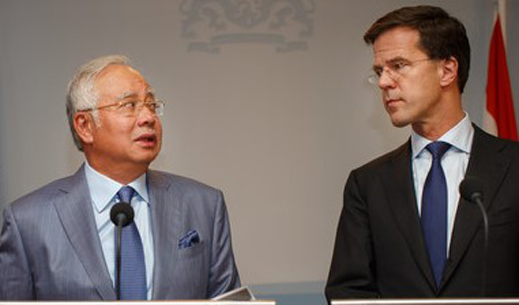
As the JIT investigation progressed, however, the Malaysian pathologists who attended the identification process at Hilversum reported their concerns to their government. The sister of Captain Wan Amran, the pilot of MH17, who went to Hilversum to identify his body, said she had seen a film of his body and had been told by investigators there were no shrapnel or bullet wounds.
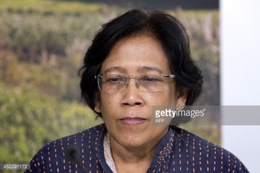
The Malaysian Ambassador to the Netherlands, Fauziah Binti Nohd Taib (right), then issued a public complaint that Malaysian officials were "not sufficiently involved” in the Hilversum investigation. Press reports of what she said exactly have been removed from the internet. They were reported in Dutch several weeks later.
Rutte decided he should negotiate directly with Najib. On the way to their meeting, he passed to a Dutch reporter accompanying him, Xander van der Wulp, that the reason Malaysia had been excluded from the JIT was that in homicide cases Malaysia imposed the death penalty; The Netherlands did not. "That makes it difficult to work together legally with this country, though no one speaks loudly that this is the reason, ” van der Wulp reported on November 5. This was a fabrication. The JIT agreement covered the investigation; it reserved to the signatory governments the right to prosecute under their own laws.
After Rutte and Najib had met on November 5, van der Wulp reported that the Malaysian Government’s "criticism is completely gone. [Najib] Razak called the conversation with Rutte very useful and productive.” Van der Wulp wasn’t told what the Malaysian criticism had been. Nor was he told that Rutte and Najib had agreed Malaysia would be permitted to join the JIT on the condition that it abided by the non-disclosure rule covering the evidence gathered. Rutte then flew on to Australia to meet Abbott.
The problem for Rutte, Najib, and Abbott was that they couldn’t go public with the evidence the Australian pathologists and Victorian Coroner already had begun to circulate. This was that the autopsy records ruled out one cause of death of the victims — the allegation that a Russian Buk missile had struck MH17.
Abbott almost let the cat out of the bag before Rutte arrived in Sydney from Kuala Lumpur. "I’ve become quite a good friend of Mark Rutte over the last few months,”Abbott said. "Obviously we have worked very closely together in responding effectively to the MH17 atrocity and the number one item in our discussions is the progress of the investigation, the progress of identification and repatriation and our shared determination to ensure this atrocity is full[y] investigated and if the perpetrators can reasonably be identified, they are brought to swift and exemplary justice.”
Abbott was reported in a Sydney newspaper as saying this on November 5. From the Australian police, intelligence services, and Defence Ministry experts, and from Coroner Gray in Victoria, briefings for Abbott had indicated, either that the Dutch investigation would identify the Ukrainian government as perpetrating an air-to-air missile attack on MH17; or else the investigation would be inconclusive, save for one point: there had been no Buk missile attack. The Australian prime minister’s "if” and "reasonably” said everything.
After Abbott (below, right) and Rutte (left) met in Canberra on November 6, Rutte stuck closer to the truth, but Abbott tried to keep the Buk story alive.
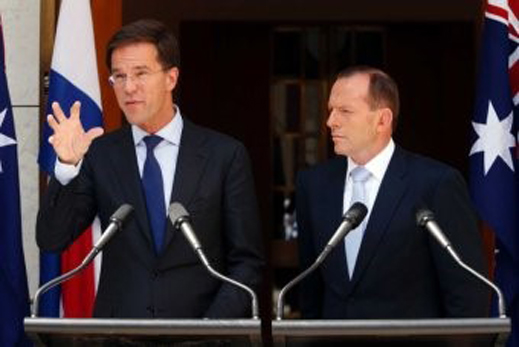
Here is the Dutch transcription of what the two men said. Rutte: "I can guarantee you that we will do everything we can to bring those responsible to justice… I have no 100 per cent guarantee but I do have 100 per cent guarantee that we will do everything we can to bring them to justice.” Abbott: "We were given very strong security advice in the days following the atrocity as to the type of weapon, as to the place from where the weapon was fired and as to the likely prominence [Abbott meant provenance] of the weapon and there’s been nothing since then to question that original security advice.” In the Australian state media reporting, the difference in meaning wasmissed.
The Dutch-Australian problem on November 5 became clearer a few days later, on November 14 in Melbourne, when two of the Australian pathologists and coronial court officers revealed publicly at an Asian coroners convention that there were no shrapnel wounds in the bodies of the MH1 passengers. Their report can be read here. Noone noticed the importance of the admission.
By the next month the evidence of the bodies was clearer. A Buk missile explosion, with release of more than 7,800 metal fragments raking the port (left) side of the aircraft, starting at the pilot’s cockpit and going back to Row 12, was impossible. An 8-page report commissioned by Coroner Gray and drafted for him by David Ranson, a pathologist who had been working at Hilversum and who was head of the Victorian Institute of Forensic Medicine, was sent to the Australian victims. Gray’s purpose was to identify the cause of death and help the families understand how their loved ones had died, how swiftly, and if they had been conscious of what had befallen them.
That report was released to a reporter named Carolyn Ford. She read it, and then summarized for publication. She didn’t understand the significance of what Ranson had revealed. Ranson himself was still unclear on this last month when he freely chatted. He said he had had regular debriefings and discussions with the Australian Federal Police on his findings. He denied that his use of the term "missile” in his reports meant a Buk. "Don’t confuse the meaning of the phrase, ‘missile injuries’. It means flying objects that strike the body’.” They were "rare”, Ranson has reported.
Once international publication of the revelations was read, however, the problem Coroner Gray faced in revealing the December 2014 report was sharpened by communications from the Australian Federal Police and the Defence Department. Gray, constitutionally a member of the judiciary independent of the government, was requested not to release the report. So it was classified. A press request was stonewalled with a promise from Gray to respond; he didn’t.
This week, on September 29, an Australian barrister, James O’Neill (below, left), launched a formal request for Gray (right) to release the December report. "There is a compelling case,” O’Neill wrote in his submission to the coroner, "that the truth as to the actual causes of death of the MH17 passengers and crew, and the means by which these deaths were brought about, be known. The limited release of Dr Ranson’s report thus far has not had that effect. More informed analysis and debate is contingent upon access to relevant data. Accordingly I seek the release of Professor Ranson’s autopsy report to me.”
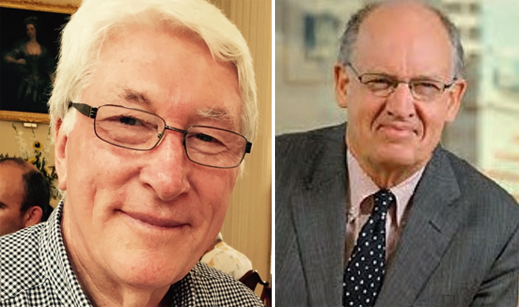
O’Neill’s application is a proceeding under the Victorian Coroners Act of 2008. This requires confidentiality for autopsy data except in cases when an applicant for disclosure has a "sufficient interest” in the evidence; or when there is public and media interest. The local courts have ruled in favour of disclosure by the coroner for media. According to a judgement in a federal Australian court case of 2011, "there is a need to balance the public interest in protecting living or deceased’s persons personal or health information with the public interest in the legitimate use of that information.”
This means that if Gray continues refusing to disclose the MH17 report, he will face a judicial review by a higher court in open session. That would be a magnet for the international media seeking the MH17 evidence.
O’Neill has already published in the US an account of his attempts to open the MH17 investigation to public scrutiny. In this week’s submission, O’Neill said: "There has also been much public comment, much of it ill-informed and at the least premature, attributing the cause of the crash (a BUK missile is alleged) and responsibility, directly or indirectly, for that missile. Responsibility, again much of it ill informed and certainly premature, has been attributed to Russia in general and Mr Putin in particular…There have been widespread geopolitical consequences of that event directly involving Australia, including for example singularly inept and inappropriate remarks directed at a foreign Head of State by the former Prime Minister.”
The legal problem for Gray is one of his own making. There can be no doubt that the public interest is pressing and global. However, Australian Government officials have been making claims about the cause of the deaths, which Gray’s report and Ransom’s evidence undermine. Under Annex 13 of the International Convention on Civil Aviation— the Australian Government has publicly testified this sets the rules for the JIT – the disclosure of many kinds of evidence gathered in an air crash investigation can and must be withheld. There’s an if. The evidence cannot lawfully be withheld and kept secret if the cause of crash and blame for deaths are made public by one of the investigating parties.
That is exactly what the US, Ukrainian, and Australian Governments, Abbott, and Bishop have done. They have publicly alleged that a Buk missile caused the crash and the deaths; and that when the incident occurred, the Novorussians, allegedly operating the Buk missile battery, were under Russian command, running all the way to the Kremlin. Annex 13 cannot legally be used to prevent disclosure in this circumstance. According to the US aviation accident litigator, "the MH17 case is much harder to explain than precedent cases of military shoot-downs of civilian airliners, like the Korean KAL007 [shot down by a Soviet Airforce fighter in 1983] or Iran Air Flight 655 [shot down by the USS Vincennes in 1988]. The [International Civil Aviation Organization, ICAO] rules allow a lot of discretion for disclosure and non-disclosure.There is much less [discretion] if there is relevance to findings or conclusions [of an Annex 13 report], when the evidence is directly, genuinely required [to substantiate] what is being made public.”

Rutte with President Petro Poroshenko (left); President Victor Yanukovich (right)
"The MH17 investigation,” the US lawyer adds, "is a very unique case. It is not as transparent as it should be.”
The ICAO took ten days after MH17 had been downed to agree on the terms of itsresolution to investigate. The preamble of the July 29, 2014, text starts by "welcoming the Netherlands initiative, as the lead investigator in accordance with Annex 13 of the Convention on International Civil Aviation, to send an international and independent team for the investigation of the loss of MH17, in coordination with the Ukrainian National Bureau of Incidents and Accidents Investigation of Civil Aircraft, following a request for assistance by Ukraine to ICAO and others.” The text goes on to "stress… the need for a full, thorough and independent international investigation into the loss of MH17 in accordance with international civil aviation guidelines.” It concludes by "Urg[ing] the Netherlands, supported by concerned States and organizations, to continue and finalize the independent international investigation.”
For Annex 13 and other provisions of the Chicago Convention on International Civil Aviation, read this.
The ICAO had announced almost immediately that Ukraine was the principal in the case under Article 26 and Annex 13. The delegation of investigating authority from Ukraine to The Netherlands was also lawful and compliant with the Annex, the ICAO decided. "The State of Occurrence shall institute an investigation into the circumstances of the accident and be responsible for the conduct of the investigation, but it may delegate the whole or any part of the conducting of such investigation to another State by mutual arrangement and consent. In any event the State of Occurrence shall use every means to facilitate the investigation…Note 2.— When the whole investigation is delegated to another State, such a State is expected to be responsible for the conduct of the investigation, including the issuance of the Final Report and the ADREP reporting. When a part of the investigation is delegated, the State of Occurrence usually retains the responsibility for the conduct of the investigation.”
Annex 13 requires "complete autopsy examination of fatally injured flight crew and, subject to the particular circumstances, of fatally injured passengers and cabin attendants, by a pathologist, preferably experienced in accident investigation. These examinations shall be expeditious and complete.”
Non-disclosure is provided in Sect. 5.12 of the Annex. "The State conducting the investigation of an accident or incident shall not make the following records available for purposes other than accident or incident investigation, unless the appropriate authority for the administration of justice in that State determines that their disclosure outweighs the adverse domestic and international impact such action may have on that or any future investigations.” Ukrainian officials have relied on this provision to withhold from public disclosure "recordings and transcriptions of recordings from air traffic control units” – a provision added to the Annex in 2006. The Annex also requires that "these records shall be included in the final report or its appendices only when pertinent to the analysis of the accident or incident. Parts of the records not relevant to the analysis shall not be disclosed.”
Read that last line again: press statements by Dutch officials participating in the DSB report, and in the JIT investigation, including remarks by chief Dutch investigator, Fred Westerbeke (below), are disallowed by the ICAO rules for being partial, fragmentary, prejudicial.
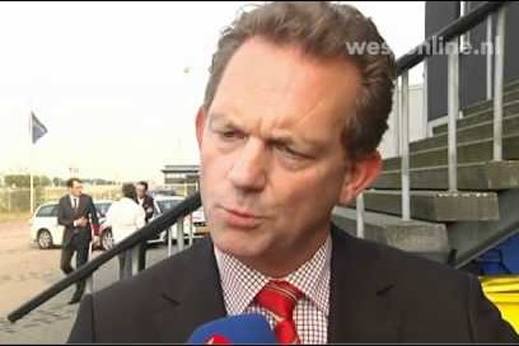
The Dutch magazine Elsevier, under Dutch Freedom of Information laws, has sought a copy of the JIT agreement of August 2014, its non-disclosure provisions, and 16 accompanying documents. Here they are:
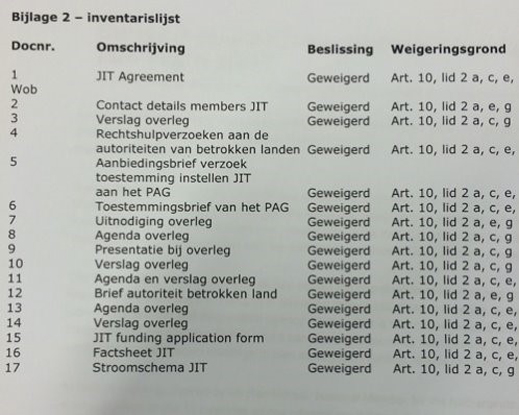
On November 19, the Dutch Government refused, claiming disclosure to the press "could endanger the relations with other countries involved.” This wording appeared to refer, not to Australia and Belgium, but to Ukraine. Dutch media reporting the blackout interpreted this as a Ukrainian Government veto over whatever evidence and report conclusions the JIT investigation produces.
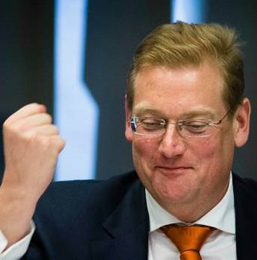
Ard van der Sleur (right), the Dutch Minister of Security and Justice, ruled: "I believe that this interest [international relations] should prevail over the interest of transparency as this is a unique study of a very serious event… it is foreseeable that the contacts between the relevant states and international organizations were going to run as smoothly and that they would be less inclined to share information.”
In parallel in Australia, O’Neill filed a Freedom of Information Act request for release of the Australian Government’s copy of the JIT agreement. The request was passed from Bishop’s ministry, which had signed the treaty with the Dutch covering the operations of Australian troops during the Hilversum investigation, until it reached the Australian Federal Police. On December 23, 2014, the police agencyrefused to release the agreement, citing, as had the Dutch Security Minister, the damage disclosure might have on "the international relations of the [Australian] Commonwealth.” This was several weeks after the Victorian Coroner had begun releasing the evidence the JIT had gathered from the MH17 autopsies, proving the absence of missile shrapnel.
Foreign Minister Bishop’s public statements on the MH17 investigation started by claiming on September 30, 2014, that "an investigation into the cause of the crash, as required by the Chicago Convention on International Civil Aviation, is underway. The investigation has broad international participation, drawing on experts from France, Germany, Indonesia, Italy, Malaysia, Russia, Ukraine, the United Kingdom and the United States, as well as from the European Aviation Safety Agency and the International Civil Aviation Organisation.”
At the United Nations (UN) on July 15, this year, Bishop claimed the investigation by the Dutch-led group was neither as fast nor as transparent as a new, alternative tribunal might be. "Our resolution also demands a full, thorough and independent international investigation into this act. We must have answers. We must have justice. We owe it to the victims and their families to determine what happened and who was responsible… Justice delayed is justice denied. We owe it to the families and the loved ones of those who died on MH17 to pursue the criminal investigation as soon as possible…Any further delay sends a very bad message to the increasing number of non-state actors who are capable of such an atrocity. The international community needs to be utterly united in condemning any attack on civilian airlines in commercial airspace.”
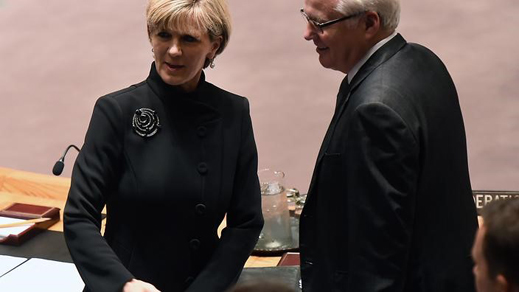
Bishop speaks to Russian Ambassador to the UN, Vitaly Churkin, September 2014
The Australian government radio broadcast that Bishop "believed Russian-backed separatists were responsible for the disaster and may have mistook the commercial airliner for a Ukrainian jet.” .
A letter to the UN signed on July 10 by the governments of Australia, Ukraine, The Netherlands, Belgium, and Malaysia claimed: "We consider that a tribunal established by the Security Council would be the most effective mechanism to deliver justice for the families of all victims of the MH17 incident. It would also maximize international cooperation, which will be necessary for an effective prosecution.” The official implication was that to be "effective”; to "maximize international cooperation”, and to produce the evidence "for an effective prosecution”, the DSB should be superseded and the JIT replaced.
Why Bishop’s foreign ministry had signed an extension of treaty with the Dutch to keep armed Australian troops at the MH17 investigation at Hilversum for another year, when the evidence falls short of "effective prosecution”, has not been explained.



.jpg/250px-ElbeDay1945_(NARA_ww2-121).jpg)





